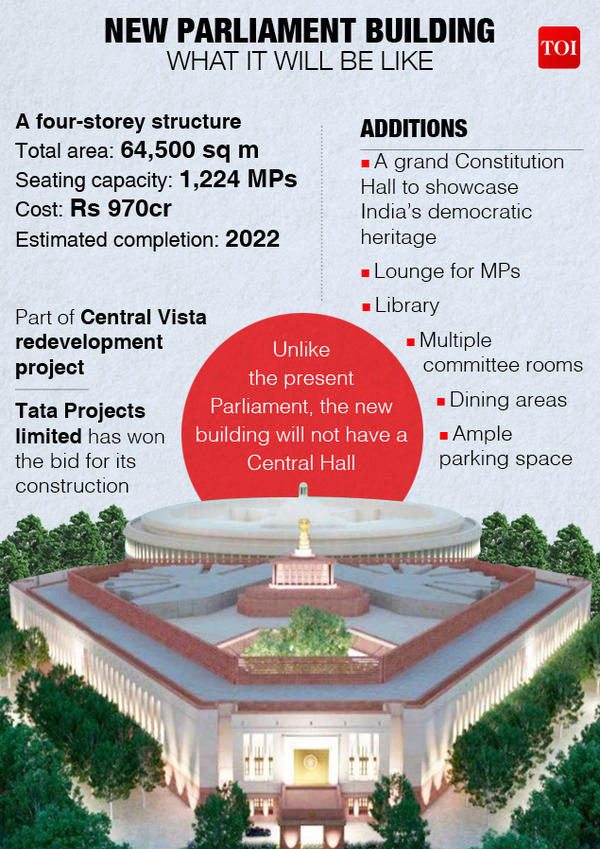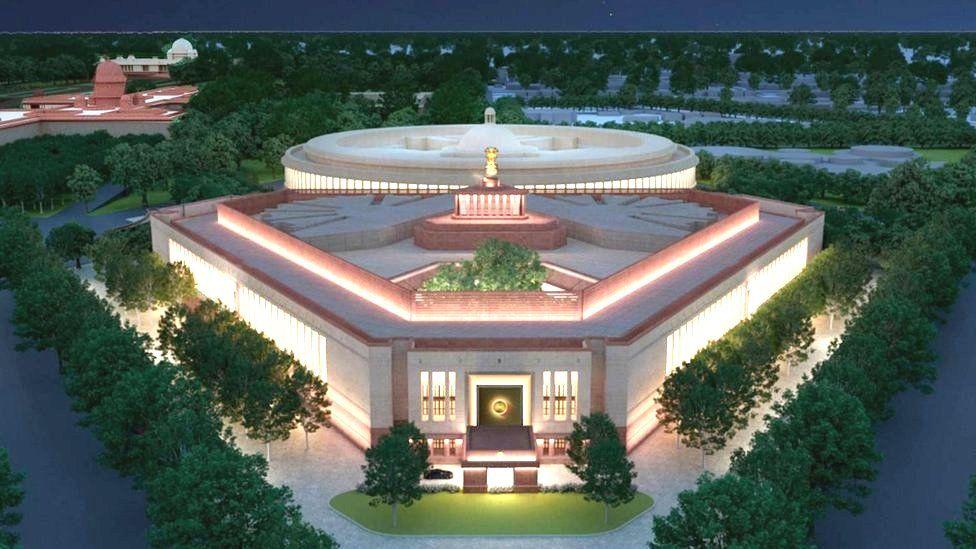Prime Minister Narendra Modi will inaugurate the new Parliament building on Sunday, 28 May, showcasing its exquisite artwork and featuring a ceremonial sceptre called ‘Sengol’ among its many highlights. Constructed at a cost of ₹971 crore, the new complex stands as a symbol of India’s progress, reflecting the aspirations of the nation’s 1.35 billion citizens. Its innovative triangular design optimizes space utilization and fosters efficient governance.

Buy Prime Test Series for all Banking, SSC, Insurance & other exams
Here are the key facts about the new Parliament House:
- Triangular Design for Optimum Space Utilization: The new Parliament House features a unique triangular shape, ensuring efficient space utilization within the complex. This design allows for maximum functionality and accommodates larger legislative chambers.
- Lok Sabha: Inspired by the Peacock: The Lok Sabha, based on India’s national bird, the peacock, will have an expanded seating capacity. With 888 seats, it will accommodate nearly three times the current capacity. The Lok Sabha hall will also be able to accommodate 1,272 seats for joint sessions.
- Rajya Sabha: Inspired by the Lotus: The Rajya Sabha, inspired by the national flower, the lotus, will have 348 seats. The new design accounts for future increases in the number of Rajya Sabha members, ensuring sufficient space in the House.
- Constitutional Hall: A notable addition to the new Parliament House is the Constitutional Hall, located in the center of the complex. This hall will serve as a significant space within the building.
- No Central Hall: Unlike the old Parliament House, the new complex will not feature a Central Hall. The low capacity of the previous Central Hall necessitated additional chairs during joint sessions, creating security challenges. The Lok Sabha Hall in the new Parliament House is designed to easily accommodate joint sessions.
- Earthquake-resistant Construction: The new Parliament building is designed to withstand earthquakes. As Delhi is now in Zone 4, characterized by a higher earthquake risk, the new structure will be fortified to endure strong shocks in Zone 5.
- Modern Facilities: Each seat in the new Parliament House will be equipped with a multimedia display in front, providing modern amenities to members of Parliament. This enhancement will enhance the legislative experience and facilitate communication.
- Eco-friendly Construction: The new Parliament House adopts eco-friendly practices, utilizing green construction materials. The building incorporates energy-saving devices, reducing electricity consumption by 30%. Rainwater harvesting and solar power generation systems are also incorporated into the design.
- Enhanced Committee Rooms: The new Parliament House will feature an increased number of committee rooms, equipped with sophisticated audio-visual systems. These upgrades will facilitate the functioning of parliamentary committees.
- Media Facilities: Special facilities will be provided for the media, including 530 seats dedicated to media personnel. Galleries will be available for the general public to witness parliamentary proceedings, ensuring a clear view of the house from every seat.
-
Public-friendly Design: Efforts are underway to make the new Parliament House more accessible to the public. Two special entrance points will be designated for children, the elderly, and disabled individuals to access the Public Gallery and Central Constitutional Gallery. Additionally, the new building will incorporate improved fire safety measures.
Also Read: Historic Scepter ‘Sengol’ Finds Home in New Parliament Building



 Indian Olympic Medal Winners List Till N...
Indian Olympic Medal Winners List Till N...
 Who is the Inventor of the Gramophone?
Who is the Inventor of the Gramophone?
 HS Dhaliwal Appointed New DGP Of Andaman...
HS Dhaliwal Appointed New DGP Of Andaman...
